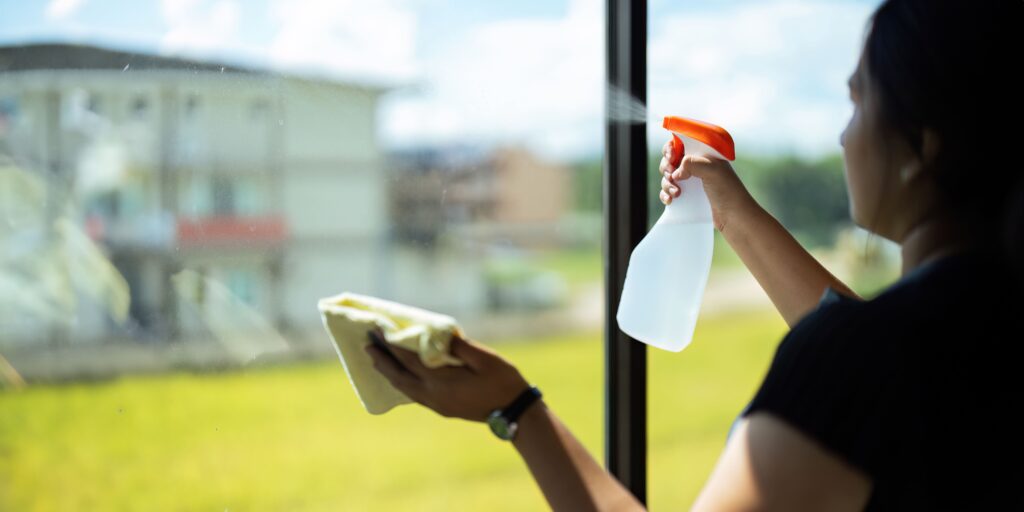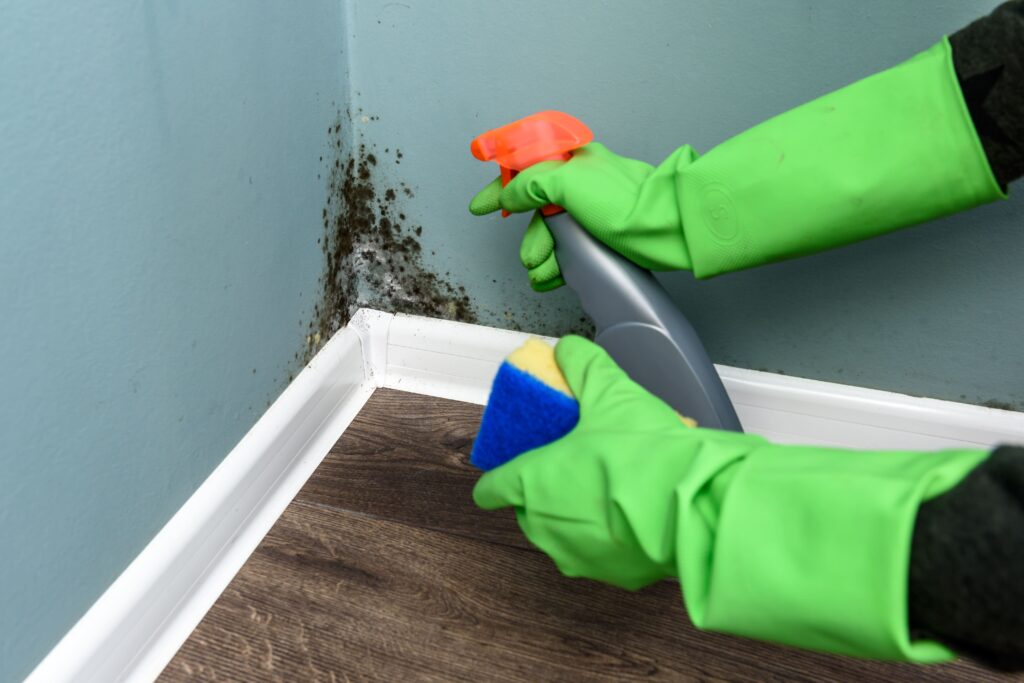A home you have lived in for a while naturally gathers signs of everyday life, dust in corners, grime on surfaces, grease in the kitchen, and scale in the bathroom. Regular cleaning tools or DIY methods often cannot get rid of these completely. That is where a professional end of lease clean makes a real difference. Real estate agents prefer it because it saves time and ensures the property is ready for the next tenant. With proper tools, specialised products, and a clear checklist that meets landlord expectations, professionals can bring the space back to a standard that passes inspection without hassle.
Is End Of Lease a Legal Requirement?
While end-of-lease clean may not always be legally mandated, most rental agreements include a clause requiring tenants to return the property in the same clean condition as when they moved in. Failing to meet this condition can result in deductions from the security deposit or disputes with the landlord. In some regions, property managers follow strict cleanliness checklists during final inspections, and a professionally cleaned property is often the only way to meet those standards. So, while not technically a law, end-of-lease cleaning becomes a contractual obligation, and skipping it can cost you both money and peace of mind.
What Difference Do the Tools and Machines Bring?
The difference between a regular clean and a professional end of lease clean lies in the tools and technology used. Professional cleaners don’t rely on household brooms or basic sprays but the hype is around industry-grade machines and scientifically backed methods that guarantee a deep, hygienic, and inspection-ready finish.
Steam Cleaners are essential for sanitising bathrooms, kitchens, tiles, and even carpets. End of lease clean uses high-pressure vapour to loosen grime, kill bacteria, and remove grease without harsh chemicals, ideal for allergy-sensitive environments.
UV Inspection Lights help spot hidden stains, pet urine, and microbial growth that the naked eye can’t see. These are especially useful in carpets and corners, often overlooked during general cleaning.
HEPA Filter Vacuums trap 99.97% of dust particles, allergens, and microscopic debris, making them critical in achieving the dust-free conditions required during final inspections, especially in rental properties with pets or smokers.
Other commonly used tools include:
- Rotary floor scrubbers for hard surfaces
- Wet/dry extractors for carpet shampooing
- High-reach dusters for vents and ceiling fans
- Window vacuums for streak-free glass finishes
- Chemical foggers or ozone machines for odour neutralisation
Why People Adore DIY Cleaning?
Of course, everyone’s first thought is saving money. Why pay someone else when you can just clean the place yourself with some basic supplies and effort? It seems like a smart and simple decision. Most people feel they know their space best and believe a few hours of end of lease clean will be enough to get the job done.
There’s also that sense of control. When you do it yourself, you decide how it’s done, what products to use, and where to focus. It feels personal and straightforward, especially when there are so many cleaning tips and tricks available online. For many, it’s more about the peace of mind that comes with taking care of things on your own, without needing to rely on anyone else.
But while that makes sense in theory, end of lease clean is a different story. It goes beyond wiping down surfaces or vacuuming floors. It involves deep cleaning every corner, from inside appliances to behind furniture, and meeting a standard that landlords and property managers expect. So while the DIY route is easy to appreciate, it often doesn’t match the results that a professional service can deliver.
DIY Cleaning Is a Waste of Time and Risky
First and foremost, when you are leaving your rental home, you’re already dealing with the pressure of packing, relocating, paperwork, and coordinating move-out logistics. Adding the responsibility of deep cleaning the entire property, often within a tight deadline, is not only overwhelming but also counterproductive. Without professional experience, tools, or time, a DIY end of lease clean approach becomes more of a gamble than a solution.
Here’s the reality. Landlords and property managers do not just look for surface-level tidiness. They inspect everything from grout lines and range hoods to skirting boards and window tracks. DIY end of lease clean typically lacks the power and precision to meet these expectations. Without access to high-performance equipment like steam cleaners, HEPA vacuums, and specialized chemicals, it’s nearly impossible to achieve the same results.
Moreover, using the wrong products on surfaces like stone countertops or hardwood floors can lead to damage, and that may end up costing you part of your deposit. A rushed or incomplete clean can also delay final inspections, potentially putting your move-out date or next tenancy at risk
Why is end of tenancy cleaning important?
You can call the end of lease clean a blessing when you are moving into a new apartment. Everything feels fresh, neat, and ready to be called home. But the same moment can feel stressful when you are the one moving out and your landlord asks for a cleaning receipt. That is when you remember how nice it felt to step into a clean space and realise the same should be offered to the next tenant. A home should be returned in the same condition it was given to you.
For landlords and agents, end of lease cleaning Sydney goes far beyond basic cleanliness. It is about maintaining property value, creating a good impression for future tenants, and avoiding unnecessary delays in re-renting. A professionally cleaned home makes the handover smooth and shows that you have taken responsibility seriously. It protects your bond and leaves behind a positive experience for everyone involved in the leasing process.
Eco-Friendly and Compliance-Based Cleaning is Now A Requirement
These days in Australia, end of lease cleaning Sydney is not just about making a place look good. It is also about doing things the right way by following the rules and being mindful of the environment. In states like New South Wales and Victoria, rental laws say that tenants must leave the property in the same clean condition it was in when they moved in. This often includes carpet cleaning and pest control, especially if pets were living in the home.
At the same time, there is more focus on using eco-friendly end of lease clean methods. Landlords and agents now prefer services that use safe, non-toxic products and machines that do not harm the environment. This helps keep kitchens, bathrooms and other areas free from harsh chemical residue and makes the home safer for the next person moving in. Whether you are renting or offering cleaning services, people now expect you to meet both legal and environmental standards. Cleaning in a safe and eco-conscious way is not just a nice option anymore. It is what people look for and trust.
The Link Between Property Value and End-of-Lease Clean
End of Lease Cleaning Sydney does more than just help tenants get their bond back. It also plays a big role in how the property is seen by landlords, agents, and potential new tenants. A well-cleaned property leaves a strong first impression, which often leads to quicker rentals and higher interest from quality tenants. It shows that the place has been looked after, which helps maintain or even increase its market value over time.
On the other hand, if a property is handed back in poor condition, it can signal neglect and may cost the owner more in repairs, deep cleaning, or lost rental income. Professional end of lease cleaning ensures the space is fresh, presentable, and ready for the next inspection or viewing. For landlords, this protects their investment. For tenants, it builds trust and helps them exit on good terms. In short, an end of lease clean benefits everyone and adds long-term value to the property.
What Is Included in the End of Lease Cleaning
End of lease clean is a detailed and thorough process that covers every area of the property to make sure it is returned in the same clean condition it was in at the start of the tenancy. It is far more than a regular weekly clean. Here’s what is usually included:
- General Cleaning: Dusting of all surfaces, walls, skirting boards, light fittings, switches, doors, and inside cupboards and drawers. Removal of cobwebs and marks on walls, where possible.
- Kitchen: Deep cleaning of countertops, cupboards, sinks, stovetops, rangehoods, splashbacks, ovens, and inside and outside of all appliances.
- Bathrooms: Scrubbing and descaling of toilets, showers, bathtubs, taps, tiles, mirrors, and vanities.
- Floors and Carpets: Vacuuming and mopping of all floors. Professional steam cleaning of carpets if required by the lease agreement.
- Windows: Cleaning of internal windows, tracks, and sills. External windows may be included depending on access.
- Additional Areas: Cleaning of balconies, garages, laundry areas, and removal of rubbish if needed.
Some properties may also require pest control, blind cleaning, or outdoor area cleaning. Each checklist depends on the condition of the home and the expectations of the landlord or property manager. Professional cleaners follow these lists closely to make sure nothing is missed.
Candid Cleaners End of Lease Cleaning Service
When it is time to move out, leave the End of lease cleaning Sydney to us. At Candid Cleaners, our End of Lease Cleaning service is designed to meet the highest inspection standards set by landlords and real estate agents in Sydney. We do not just tidy up, we deep clean every corner, appliance, surface, and space to help you get your full bond back and leave the property in top condition.
Using high grade equipment and environmentally friendly products, our trained team follows a detailed checklist aligned with current industry expectations in 2025. From stubborn oven grease to bathroom mould and hard to reach dust, nothing is overlooked. We also offer optional add ons like carpet steam cleaning, wall spot removal, and balcony polishing.








